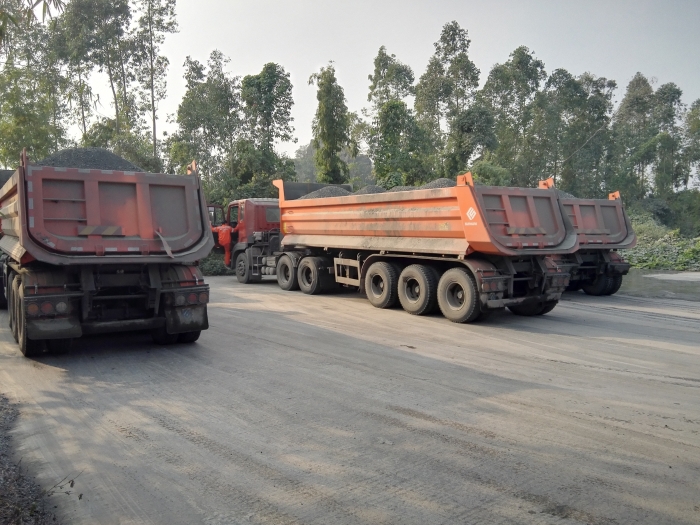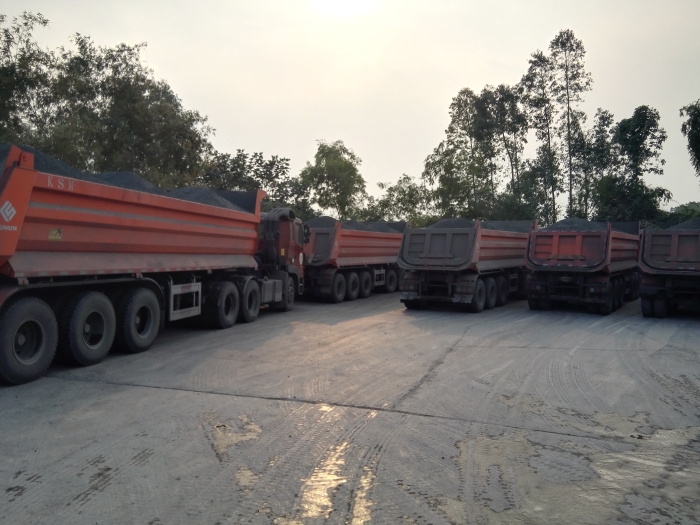- PRODUCTS
- SOLUTION
- SERVICE
- NEWS
- ABOUT US
Operating a modern semitrailer involves conducting pre-trip inspections, loading cargo properly, familiarizing with dashboard controls, maintaining safe distances, using mirrors effectively, and practicing cautious turning and parking techniques.
Being prepared before operating a modern semitrailer is critical. You’ll want to follow these basic steps to get ready to go:
Inspect the vehicle – check the semitrailer and the tractor unit in a pre-trip inspection. Take a look at the tires for inflation and tread depth, lights, and brakes; check for excessive wear or other problems and correct them before you operate the vehicle.
Secure your cargo – check to make sure your cargo is properly secured and evenly distributed; make sure to use the proper type of restraints such as straps or chains to prevent the cargo from shifting during transit.
Check fluids – make sure all the fluid levels are full: oil, coolant, and hydraulic fluid.
Adjust mirrors – get the best possible visibility around the vehicle by adjusting your mirrors.
Fasten your seatbelt – make sure both you and any passengers are secured with their seatbelts.
Adjust seat and controls – adjust seats and steering wheel to a comfortable position and familiarize yourself with the controls found on the dash, steering wheel, and walls: location and operation of the transmission shift, the brakes, the trailer brake control, and other controls.
Plan your trip – know your planned route and investigate potential roadway hazards, such as construction activity, narrow roads, or low overpasses.
Check the weather and the road – always know what the weather is like on your planned route and check the road conditions to adjust accordingly.
A key safety strategy for traveling safely and effectively in a modern semitrailer refers to mastering basic driving skills. The seven driving skills that are discussed above are the following:
Maintaining proper following distance from the vehicle traveling in front. At high speeds, large vehicles like modern trailers require sufficient stopping distance. A safe distance is one car length for every 10 mph of speed.
Using mirrors to monitor the positions of vehicles around you . Being aware of what is happening on the road is essential for safe travels: make a point to check the mirrors before changing lanes, turning, backing up, etc.
Managing blind spots . Modern trailers have especially large blind spots to the right and behind the trailer. Be particularly cautious when changing lanes or merging in traffic. It can be useful to adjust the mirrors to reduce blind spots.
Initiate smooth acceleration and smooth braking . Abrupt movement of the trailer can shift the cargo carried or damage it. Planning on moving and stopping gradually makes travels safer and more comfortable.
Watch speed on curves and ramps . Before entering a curve or a ramp, be sure to slow down the vehicle to ensure that it remains stable and upright. Failure to correct the speed results in the trailer tipping over.
Use turn signals and the horn to tell other drivers what you are doing and where you are. Using them in advance is particularly crucial to alert the drivers around you. Use the horn if necessary.
Slow down when road conditions require it . Poor road conditions, whether rain or ice, dictate a reduction in speed to ensure that the trailer remains under driver control.
Finally, being sure to safely park and reverse, do not be in a rush when navigating these driving situations.(ALOADNDAR). Choose a level surface for parking, and slow down sufficiently when reversing, preferably test the availability of a spotter, and make sure to check the mirrors.

Driving a modern semitrailer safely requires a combination of skills and following of safety guidelines. Read the following list of such driving practices below:
Stay alert and concentrated. Do not use any distractions, including a cell phone, eating, and messing around with radio;
Observe speed limits. This recommendation is particularly important in work zones and big cities. Speeding is a major cause of accidents;
Keep a safe following distance from the vehicle in front of you. Use the rule of X: if a car is following another at the speed of A, it should be at least AX feet behind; for instance, if the road speed limit is 60 mph, the distance should be equal to 6 car lengths. In general, a distance of about 100ft is sufficient;
Signal the turns with the correct use of both the signals of your vehicle and mirrors. Use your mirrors to detect position of vehicles around you before turning or changing the lanes;
Drive slowly in the rain, snow, and on icy roads. The possibility of an accident increases in these conditions due to a lower traction or longer stopping distances;
Avoid sudden stops, starts, or turns. If possible the brake pedal and the steering wheel should be pressed and rotated gently to prevent loss of control;
Check for your blind spots using both side mirrors. The number of blind spots is particularly high on the right side and behind you, so make sure to check this side using your right mirror;
Drive defensively: constantly expect problems from other drivers, require other drivers to wait for your changes of lanes and be alert for the occasional “nut”;
Use your horn: if unsure if other drivers realized you are driving around them, beep, in particular use the horn approaching curves and going down steep hills.
Follow the correct procedure for parking:
When parking for the night, select a level ground; apply the parking brake to keep the vehicle from moving; after exiting the cab, put a wheel chock in place under a rear tire to prevent the trailer from moving.

Efficient cargo loading and unloading is essential for safe transportation. Here’s a thorough guide:
Plan the load: before starting to load the cargo, calculate the weight distribution to adhere to the regulations and keep the balance.
Inspect the trailer: make sure the trailer is clean and checked for damage. The floor must be free of debris and strong.
Use special equipment: to load the cargo safely, use machinery such as forklifts or pallet jacks.
Secure the load: load straps, chains, and other similar devises to prevent shifting from vibrations. Make sure the load is spread evenly.
Follow the guidelines: stack the cargo according to weight and size requirements. This means heavier a=things go first, and lighter ones are on top.
Check the weight: before leaving, make sure the weight is distributed evenly to avoid overloading on one particular side.
Secure the trailer: double check everything is secured and all the doors are closed and locked.
Unload with safety in mind: unload the cargo much in the same manner. Use the fork lifts to lower heavier boxes first and avoid injuring oneself.
Inspect the trailer: after the trailer is empty, check to see if anything is damaged. Make sure it is clean and ready for another load.
Proper maintenance and timely repair are the prerequisites for keeping a modern semi-trailer in excellent condition. Here are the guidelines:
Follow the manufacturer’s guidelines: Consult the manual for compliance with manufacturer’s procedures and timelines.
Regular inspections: Check the trailer regularly, including its tires, brakes, lights, and suspension among others.
Tire pressure: Ensure that tires are always inflated to the required pressure to ensure even wear and fuel economy.
Replace worn or damaged parts: Change any worn or damaged part on a timely basis to prevent damage to other components of the trailer and ensure a reasonable level of safety.
Grease moving components: Keep the hinges, landing gear, and other movable parts such as suspension components of a semi-trailer properly greased and lubricated to prevent the excessive wear due to friction.
Check and replace fluids: Verify and replenish oil, coolant, and hydraulic fluids and other working liquids in the trailer on time.
Braking system: Regularly inspect the braking system of a semi-trailer and change the brake pads or shoes wherever necessary to ensure that the trailer’s brakes are functional.
Electrical system: Check the lights and other elements of a trailer’s electrical system and replace them wherever required.
Rust and corrosion: Examine semi-trailers for rust or corrosion on a regular basis and take preventative measures where applicable.
Keep records of maintenance and repair. Maintain a logbook of all actions performed, including checkups and repairs, as this aids in keeping track of a semi-trailer’s compliance with the regulations and identifying recurring problems.